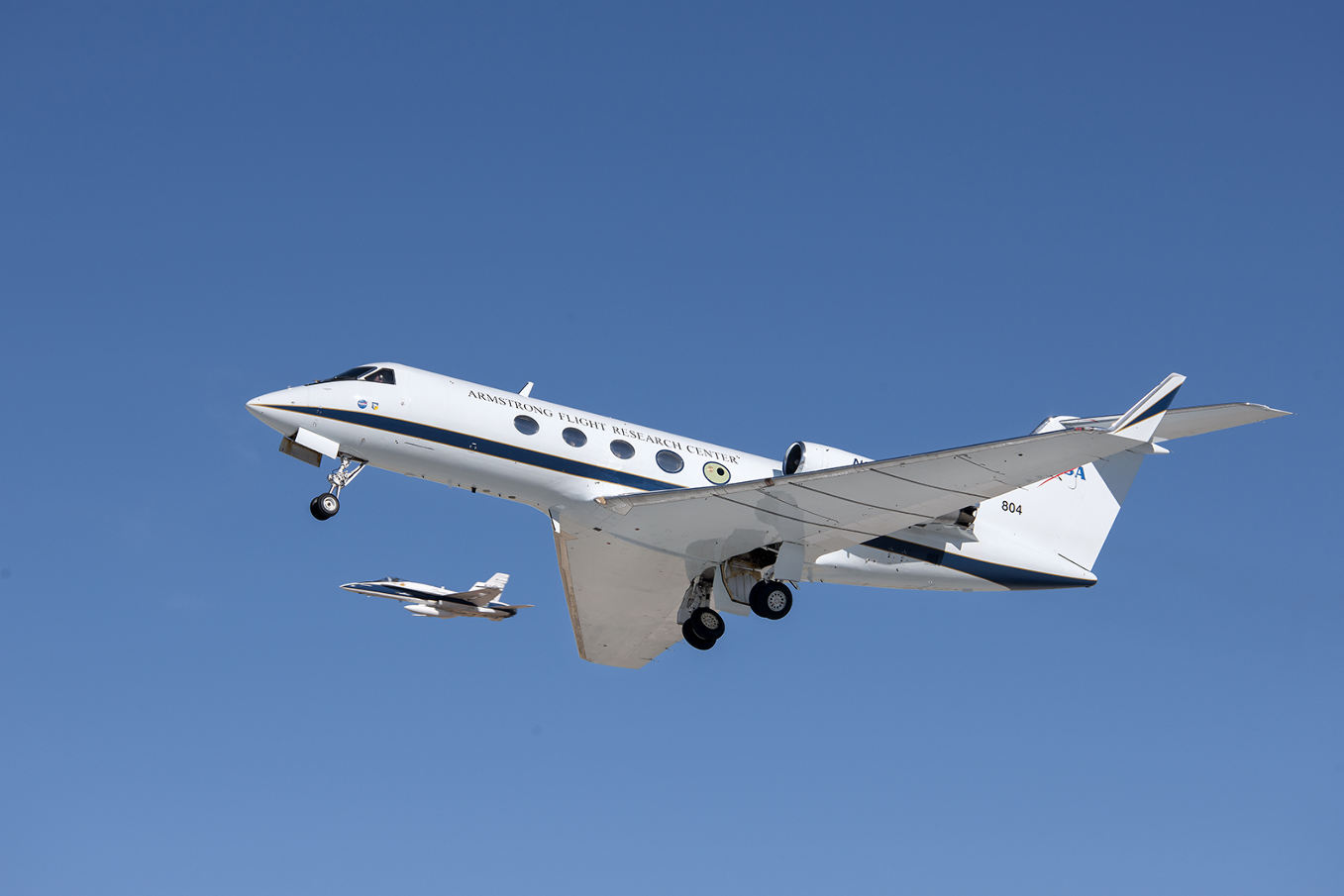NASA has tested a variety of technologies that are reported to achieve a significant reduction in the noise generated by aircraft and heard by communities near airports.
NASA has tested a variety of technologies that are reported to achieve a significant reduction in the noise generated by aircraft and heard by communities near airports.
The Acoustic Research Measurement (ARM) flights, which concluded in May, at NASA’s Armstrong Flight Research Center in California, tested technology to address airframe noise, or noise that is produced by non-propulsive parts of the aircraft, during landing.
According to the agency, the flights combined several technologies to achieve a greater than 70% reduction in airframe noise.
NASA tested several experimental designs on various airframe components of a Gulfstream III research aircraft at Armstrong, including landing gear fairings and cavity treatments designed and developed at Langley, as well as the Adaptive Compliant Trailing Edge (ACTE) wing flap, which had previously been flight-tested to study aerodynamic efficiency.
The aircraft flew at an altitude of 350 feet, over an 185-sensor microphone array deployed on the Rogers Dry Lake at Edwards Air Force Base in California.
The Landing Gear Noise Reduction technology element addressed airframe noise caused by airflow moving past the landing gear on approach. The experimental landing gear tested by NASA features fairings that are porous along their front, meaning they consist of many tiny holes that, in part, allow some of the air to flow through the fairing, while also deflecting some of the airflow around the landing gear.
Porous concepts have been studied before, but the unique design developed by NASA resulted from highly detailed computer simulations that led NASA engineers to what they believe is the ideal design for maximum noise reduction without increasing aerodynamic drag.
Another area of focus was landing gear cavities, also a known cause of airframe noise. These are the regions where the landing gear deploys from the main body of an aircraft, typically leaving a large cavity where airflow can get pulled in, creating noise.
ASA applied two concepts to these sections, including a series of chevrons placed near the front of the cavity with a sound-absorbing foam at the trailing wall, as well as a net that stretched across the opening of the main landing gear cavity. This altered the airflow and reduced the noise resulting from the interactions between the air, the cavity walls, and its edges.
To reduce wing flap noise, NASA used an experimental, flexible flap that had previously been flown as part of the ACTE project, which investigated the potential for flexible, seamless flaps to increase aerodynamic efficiency. As opposed to conventional wing flaps that typically feature gaps between the flap and the main body of the wing, the ACTE flap, built by FlexSys Inc. of Ann Arbor, Michigan, is a seamless design that eliminates those gaps.

